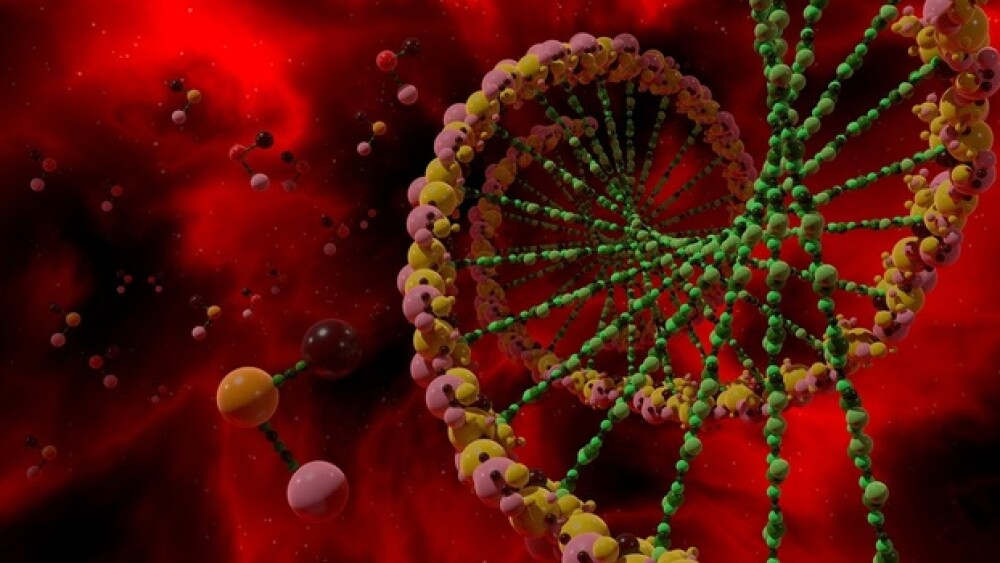Identifying the common host factors that are essential for coronavirus replication is an important element in developing broad-spectrum, antiviral therapeutics.
With seven known human coronaviruses and many others still resident in animal populations, the risk of interspecies transmission and the emergence of new strains affecting humans is an ever-present danger. Yet, more than one year into the global COVID-19 pandemic, prevention and treatment options are limited.
Broad-spectrum anti-coronavirus could address the great medical needs and help contain future outbreaks resulting from interspecies transmission. Identifying the common host factors that are essential for coronavirus replication, therefore, is an important element in developing broad-spectrum, antiviral therapeutics.
A genome-wide CRISPR study, reported in Nature Genetics and conducted by a research group from the Rega Institute and the Vlaams Instituut voor Biotechnologie, both in Belgium, identified both virus-specific and shared host factors that may be exploited for drug development against SARS-CoV-2 and the human coronavirus 229E (one of the viruses responsible for the common cold).
“We discovered that SARS-CoV-2 requires the lysosomal protein TMEM106B to infect human cell lines and primary lung cells,” the researchers wrote. “TMEM106B overexpression enhanced SARS-CoV-2 infection as well as pseudovirus infection, suggesting a role in viral entry.”
The expression of that protein correlates with COVID-19 infection, the researchers concluded after examining the results of single-cell RNA sequencing from the airway cells of COVID-19 patients.
“TMEM106B is a 274-amino acid transmembrane protein that resides in endosomes and lysosomes, controlling lysosome size, number, mobility, and trafficking,” the paper explained. “TMEM106B is poorly characterized and only recently received attention because of its role in frontotemporal dementia, the second leading cause of pre-senile neurodegeneration.”
Previous research characterized the entry step of coronaviruses, but later steps in the viral life cycle, including receptor binding, endocytosis, fusion, viral protein translation, genome replication, virion assembly, and release, are less well-understood. Those functions each may offer opportune targets for drug development.
Using CRISPR-based genetic screens, the researchers, including corresponding authors Jim Baggen and Dirk Daelemans, also “identified phosphoinositide 3-kinase (PI3K) type 3 as a common host factor for SARS-CoV-2, HCoV-229E, and HCoV-OC43.” The latter is involved in the common cold as well as encephalitis. Targeting PI3K, therefore, could potentially inhibit infections by those coronaviruses.
The researcher team “performed a CRISPR-based genome-wide knockout screen in the human Huh7 cell line, without introducing an exogenous receptor, because our SARS-CoV-2 strain induced a clear cytopathic effect in these cells,” the paper explained.
In addition to finding the “significantly enriched” TMEM106B gene encoding the “poorly characterized” TMEM106B protein and the PI3K host factor, a low-stringency screen identified a large number of other enriched genes.
Although many of those genes were discounted, a handful stood out. They included the PIK3C3 gene, which is involved in endocytic trafficking and autophagy; TMEM41B, involved in autophagy; EXT1 and ITGB6, each of which is required for cell surface receptor expression; OSBPL9, PTDSS1, and TMEM30A, which are involved in lipid homeostasis; and CCZ1B, PTPN23, and RSG1, which are involved in membrane and/or vesicle trafficking.
Validation showed the knockout of TMEM106B caused the strongest resistance to SARS-CoV. sgRNAs targeting PIK3C3, TMEM41B, EXT1, OSBPL9, and TMEM30A, also exhibited significant resistance, the researchers noted.
Notably, some genes were resistant to the viruses only when using a pool of sgRNAs. Knocking out EXT1 – but not ITGB6 – also was protective, the paper noted. Additionally, it pointed out that EXT1 encodes exostosis-1, which is involved in heparan sulfate synthesis. Therefore, the researchers suggested, as others also have noted, that heparan sulfate may help control COVID-19.
No one gene holds the key to preventing infection by SARS-CoV-2, of course. For a therapy to be most effective, therefore, it should involve TMEM106B and also “the genes implicated in heparan sulfate synthesis (EXT1), autophagy (PIK3C3 and TMEM41B), and lipid transport (OSBPL9 and TMEM30A),” the team noted.
Additional experiments determined that TMEM106B is “a bona fide proviral host factor required for productive SARS-CoV2 infection of human cells.” It is clearly implicated in spike-mediated entry into human cells.
While this research was underway, six other groups performed similar genome-wide CRISPR screens that identify host factors for SARS-CoV-2 replication. Those studies involved multiple different host cells. Not surprisingly, screens involving the same cell types have the greatest similarly of results.
Of the 50 genes most often identified in the studies, 33 were identified in two or more screens, and eight of those were identified in the Belgian study. Perhaps more pertinently, four of the screens identified ACE2. Three identified CTSL, in addition to the EXT1, ARPC4, and TMEM106B genes identified by the Belgian group, thus independently confirming those results.
Two other studies examined coronavirus replication. They also identified the ANPEP, PIK3C3, and TMEM41B genes as being pivotal to replication.
The authors suggest that TMEM106B was not found in the A549 screens because it, perhaps, “might not be required when cells are saturated with high ACE2 levels,” adding that ACE2 levels “may have been lower in our cells” than in the A549 cells used in those screens. Likewise, TMEM106B was not identified in VeroE6 cells, suggesting they may be specific to human cells and not, therefore, present in the African green monkeys from which the Vero E6 cells were extracted.
The importance of TMEM106B expression in the infection pathway for SARS-CoV-2 could allow it to serve as a prognostic biomarker for COVID-19 severity, the researchers speculated, based on the possibility that overexpression enabled the virus to enter normal cells.
Alternatively, the higher expression levels of TMEM106B may be caused by the SARS-CoV-2 infection itself, they wrote.
A third option is that TMEM106B may promote endosomal acidification, easing the entry of the SARS-CoV-2 genome into a cell’s cytoplasm. Clearly, much more remains to be learned.
These nine studies, taken together, suggest that SARS-CoV-2 may involve more cellular receptors than initially believed. Therefore, multiple screens and combined data will be vital to building a comprehensive understanding of the host factors and their dependencies in the context of SARS-CoV-2 and other coronavirus infections.






